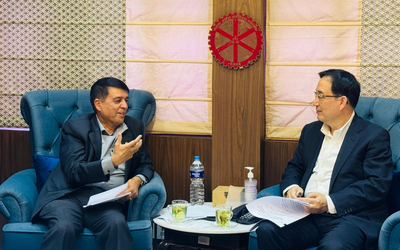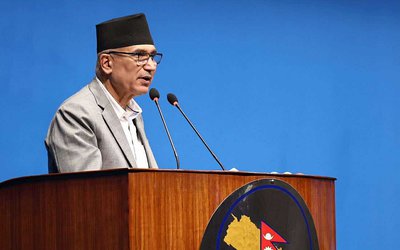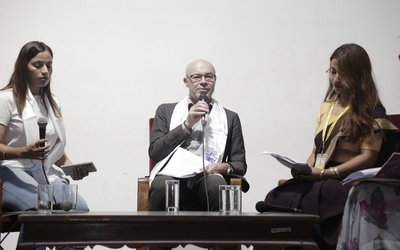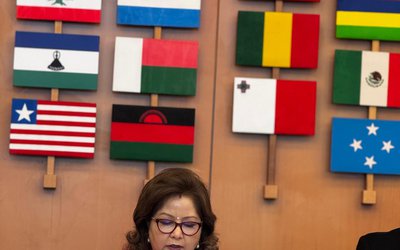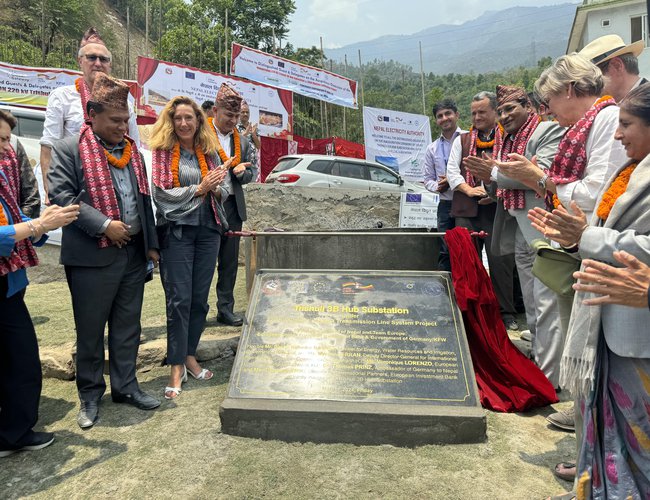
The completion of this project, which overcame various challenges such as difficult terrain, will ensure a more stable power supply in the Kathmandu Valley.
The inauguration ceremony was attended by high-level officials from the European Commission, including Energy Water Resources and Irrigation Minister Shakti Bahadur Basnet, European Commission Deputy Director General for International Partnerships Myriam Ferran, EU Ambassador Veronique Lorenzo, German Ambassador Thomas Prinz, EIB Director Thouraya Triki, and local elected representatives.
The inauguration of a 28 KM electricity transmission line in Nepal marks the launch of a new Global Gateway flagship by Team Europe and the Nepal government.
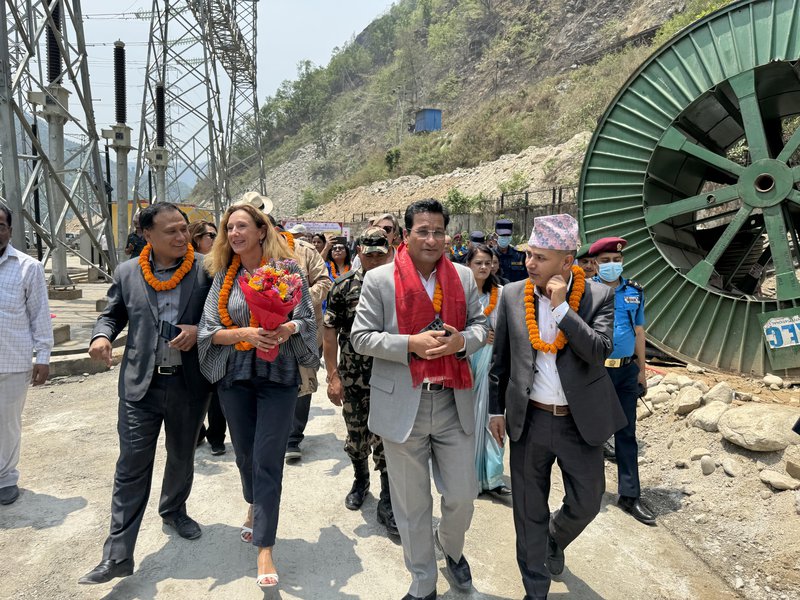
This initiative aims to support the electrification of rural areas and provide clean, affordable, and reliable energy to the Nepali population. The EU International Partnerships, along with the EU Commission's Directorate-General for International Partnerships, are prioritizing the well-being of people and the planet to create a better future.
The Trishuli 3B Hub, constructed at Pahrebensi in Kispang Rural Municipality of Nuwakot, is a significant component of the Chilime-Trishuli 220 kV transmission system project. Additionally, as part of the project's corporate social responsibility, a 33-11 kV power distribution substation has been built in Valche of Kispang Rural Municipality through the community electrification program.
These infrastructures, funded by grants from the EU in Nepal and KfW FZ, along with a concessional loan from the European Investment Bank (EIB), play a crucial role in distributing electricity from newly constructed and under construction hydro plants to households throughout the country.
The construction of the Trishuli 3B Hub substation, which occupies approximately 104 ropani of land, amounted to a total cost of Rs. 1.97 billion. This substation is connected to the Trishuli-Kathmandu 220 kV transmission line through the Matatirtha substation.
Furthermore, the community electrification program, which includes the Valche substation and the Trishuli 3B hub-Valche 33 kV transmission line, incurred a cost of Rs. 420.93 million.
To enhance electricity access and supply in the Nuwakot and Rasuwa districts, as well as ensure reliability and quality, the Community Electrification Program has successfully constructed 33 and 11 kV lines and distribution substations. As a result, over 2 thousand households in Nuwakot and Rasuwa have greatly benefited from this initiative.
During the opening ceremony, Minister Basnet emphasized the significance of the newly constructed substation. He highlighted that this development not only facilitates the utilization of electricity generated from hydroelectric projects in the Trishuli river catchment area, but also plays a crucial role in managing the country's overall electricity system.
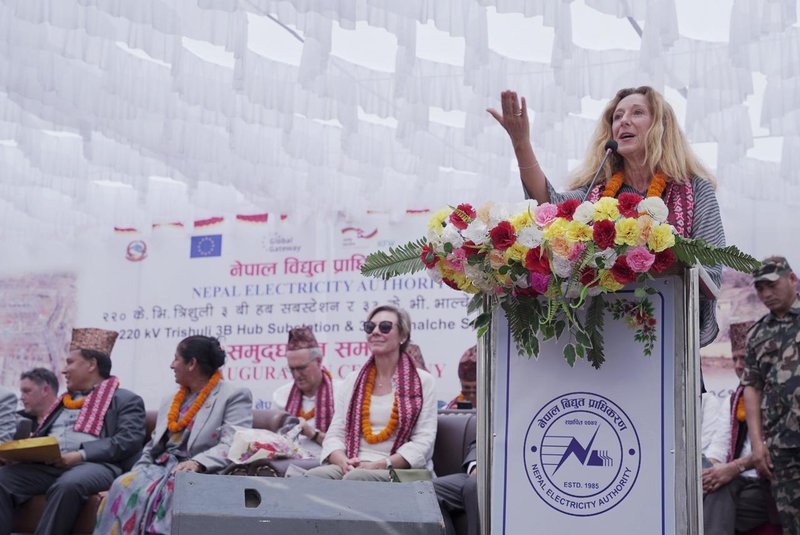
To achieve the ambitious goal of producing 28,000 MW of electricity within the next 12 years, Minister Basnet acknowledged the need for policy, legal, and structural reforms. These reforms aim to create an investment-friendly environment in the production, transmission, and distribution sectors.
Furthermore, Minister Basnet emphasized the importance of coordinated efforts between the government, local community, foreign investors, and the private sector to promote investments in the hydropower sector.
Ferran, the Deputy Director General of the European Commission, emphasized the significance of substations in the expansion of renewable green energy production to address the challenges posed by climate change. He expressed the European Union's pride in benefiting a large community in Nepal through the construction of these substations.
The German Ambassador, Thomas Prinz, announced that a subsidy of 70 million euros will be provided to facilitate the delivery of clean green energy to consumers' households.
Kulman Ghising, the Managing Director of Nepal Electricity Authority (NEA), appealed to the European Union and its member states to invest in the infrastructure of Nepal's green energy sector for sustainable development. He highlighted the need for approximately 46 billion US dollars in infrastructure investment to achieve the target of generating 28,000 megawatts of electricity in the next 12 years.
According to Thark Bahadur Thapa, the project's director, the substation will play a significant role in enhancing the reliability and quality of Nepal's overall electricity system. He also mentioned that the completion of the Chilime Hub-Trishuli 3B Hub transmission line is expected within a month.
The Chilime-Trishuli 220 KV transmission system project involves the construction of a 28 km 220 kV double circuit transmission line from Chilime Haw 220 KV substation to Trishuli 3B Hub, located in Thambuchet, Amachhodingmo Rural Municipality of Rasuwa. This project is currently in its final stage.
The Chilime-Trishuli 220 kV transmission system project, which is estimated to cost 6 billion 19 million rupees, is a joint investment by the Government of Nepal, the Nepal Electricity Authority, and receives a grant from the German Development Bank (KFW) and the EU. The EU-established EIB has also provided concessional loans for this project.
Chilime-Trishuli 220 kV Transmission Line
The Chilime-Trishuli 220 kV transmission line and the Chilime and Trishuli 3B hub substations have been built to transmit the power generated by the hydroelectric projects currently under construction and those planned along the Trishuli river and its tributaries to the national power grid. These transmission lines and substations have the capacity to transmit approximately 1,200 megawatts of electricity.
Out of the total 28 km transmission line, the foundations for 70 out of 75 towers have been laid. The foundations for the remaining 5 towers have been partially completed. 60 towers have been erected and work on the remaining 10 towers is progressing smoothly. Additionally, 15 km of wire has been stretched and the wire pulling work is currently underway on the erected towers.
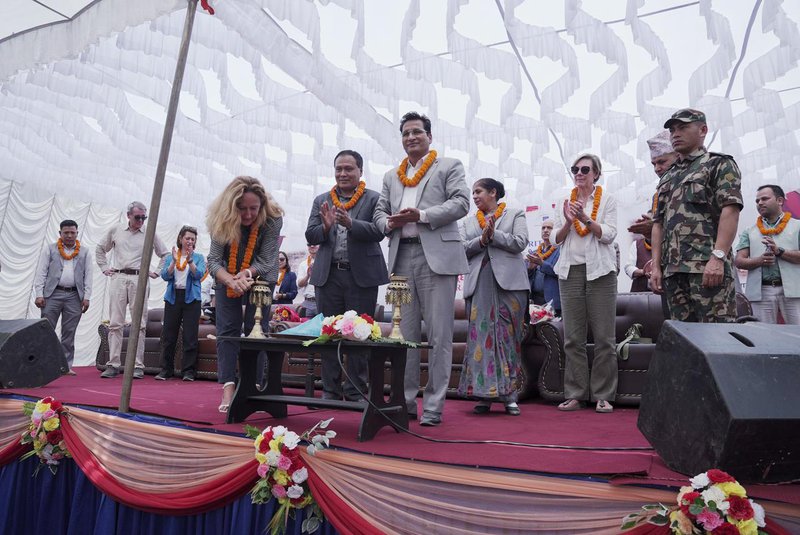
As part of the Chilime-Trishuli 3B hub transmission line, a 20 km double circuit Chilime-Mailung section and an 8 km four (multi) circuit line have been constructed up to the Mailung-Trishuli 3B hub. The construction of this transmission line is being carried out at a rapid pace with the aim of completing it within a month.
Korean companies have taken the lead in constructing a multi-circuit line to connect the power generated by the 216 MW Upper Trishuli-1 hydroelectric project. The Upper Trishuli-1 project will bear 60 percent of the construction cost for the multi-circuit line.
The construction of a tower in a geographically hazardous and challenging mountainous region has been necessary due to the absence of roads. The transportation of materials such as stones, sand, tower components, and water has been carried out by individuals or carts.
Additionally, the project has faced setbacks caused by factors such as floods, the inadequate performance of construction professionals, land use issues in forested areas, opposition from locals, and the impact of the Covid-19 pandemic.
The transmission line has been successfully built across an elevation range of 680 to 2600 meters above sea level. In areas where there was no existing access road, 33 towers had to be constructed, necessitating the creation of a separate access road to reach these locations.
The integration of electricity generated from various hydropower projects, including 60 MW Upper Trishuli 3A, 216 MW Upper Trishuli-1, 111 MW Rasuwagadhi, 42.5 MW Sanjen, 42 MW of Tadi Khola, 37 MW Upper Trishuli 3 B, 14.8 MW Upper Sanjen, and 14.3 MW Upper Trishuli, into the national system will be facilitated by the construction of transmission lines and substations.
A contract was signed with the Chinese company Pinggao Group of Companies, China in October 2074 (2017) for the construction of these transmission lines and substations, which was successfully implemented in December 2074.
The increasing demand for electricity necessitates the completion of more transmission lines across the country to efficiently transport the electricity from hydropower projects to distribution centers.

Nevertheless, numerous transmission line projects currently in progress have encountered obstacles from various sources. Likewise, the Nepal Electricity Authority requires substantial investment for these constructions, but lacks the necessary resources. MD Ghising has been diligently striving to attract more investment and overcome these obstacles in order to successfully complete the projects.
In this endeavor, the completion of the Trishuli 3 B Hub holds great importance. Additionally, with MD Ghising's regular inspections, the 220 kV Trishuli-Chileme Transmission line is nearing completion. The commitment expressed by Nepal's major development partners, namely the European Union, EIB, and KFW, is of utmost significance in addressing the resource scarcity.

Keshab Poudel
Poudel is the editor of New Spotlight Magazine.
- FOURTH PROFESSOR Y.N. KHANAL LECTURE: Nepal-China Relations
- Jun 23, 2025
- Colonel JP CROSS: Centenary Birthday
- Jun 23, 2025
- REEEP-GREEN: Empowering Communities with MEP
- Jun 16, 2025
- BEEN: Retrofitted For Green
- May 28, 2025
- GGGI has been promoting green growth in Nepal for a decade: Dr. Malle Fofana
- May 21, 2025

